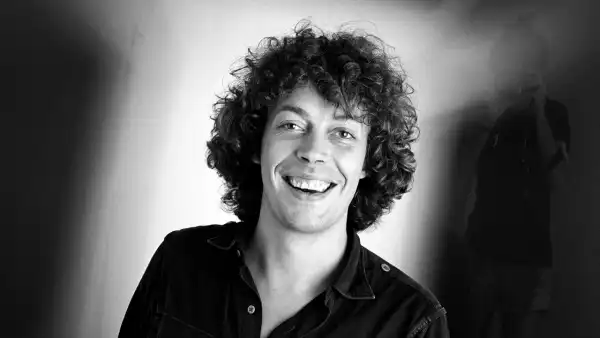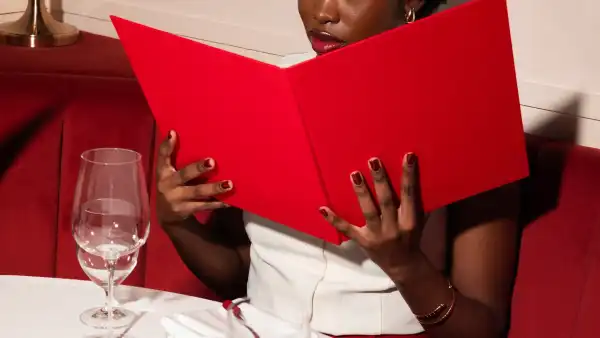
Save this storySave this storySave this storySave this story
Ryan Murphy’s true-crime series seldom drop without a splash. Shows like “American Crime Story” and “Monster” have their own gravitational pull, and so their revisionism matters. “Monsters: The Lyle and Erik Menendez Story” is no exception: it recently débuted on Netflix at the top of the streamer’s most-watched list, and has become this century’s highest-profile revisit of the 1989 murder of Jose and Kitty Menendez by their young-adult sons. Critics have savaged Murphy and his co-showrunner Ian Brennan for their tabloid-y treatment of the tragic saga, and Murphy became embroiled in a very public tit-for-tat with the Menendez family, whose condemnation of the series as a “grotesque shockadrama” was followed by Murphy’s bombastic declaration that his retelling is “the best thing that has happened to the Menendez brothers in thirty years.”
Nearly as eyebrow-raising as the feud, at least from an industry perspective, is the fact that “Monsters” is just one of four distinct series under Murphy’s banner to première last month—a feat that cements both the producer’s rare influence in television and his bounce back from a relative fallow period in the late twenty-tens and early twenty-twenties. (This dip in productivity coincided with what was then the most lucrative deal in TV history: a three-hundred-million-dollar contract with Netflix that lured him away from FX and Fox.) No longer bound to Netflix alone, Murphy also launched, in September, “American Sports Story,” which dramatizes the unsteady rise and precipitous fall of the N.F.L. star Aaron Hernandez; “Doctor Odyssey,” a medical drama onboard a luxury cruise ship; and “Grotesquerie,” a knockoff of the showrunner’s own “American Horror Story” so slapdash that its essence can be summed up as “Temu Ryan Murphy.” These series raise the number of Murphy’s ongoing television projects—which also include “The Watcher,” on Netflix; “Feud” and “American Crime Story,” on FX; and “9-1-1” and its spinoff, “9-1-1: Lone Star,” on Fox—into the double digits. And there’s no end in sight to his empire’s sprawl.
Few showrunners ever achieve Murphy’s reach, and few undergo such tectonic shifts in their perspective and aims. Dick Wolf extols law enforcement, Darren Star spins modern fairy tales, and Shonda Rhimes often explores issues of power through the romance genre. Murphy has his signature qualities: a flair for a kind of camp on steroids, an embrace of older actresses, the centering of queer characters and narratives. (He is probably the foremost gay storyteller in television history.) But he also displays more flexibility than most of his cohort, having applied his immoderate instincts to network and cable audiences, teens and prestige seekers, pop-cover musicals and ancient literary kerfuffles alike.
Murphy’s first pivot came when he embraced what he has called “television as advocacy.” The flashpoint was the first season of “American Crime Story,” which was subtitled “The People v. O. J. Simpson” and aired in 2016, amid the nineties-feminist-revisionism boom. Though Scott Alexander and Larry Karaszewski are officially the season’s creators (Murphy was an E.P. and directed several episodes), the tale—with its humane recasting of the prosecutor Marcia Clark as a failed but noble crusader rather than a national laughing stock—lent Murphy, an awards junkie, the halo of prestige that had long eluded him. “The People v. O. J. Simpson” won Murphy his first Outstanding Limited Series Emmy—a prize he picked up again for the anthology series’s far more divisive second installment, “The Assassination of Gianni Versace.”
In a 2018 interview with Emily Nussbaum, for this magazine, Murphy stated that his strategy as a showrunner was “hiding the vegetables in the cotton candy.” After the success of “The People v. O. J. Simpson,” he talked openly about the nutritional content of his upcoming projects. Then the output became a lot more uneven. Murphy announced plans for a season of “American Crime Story” that would deal with the injustices surrounding Hurricane Katrina, a project that never came to fruition. A subsequent series, FX’s “Pose”—about a chosen family of Black and brown trans and queer youth in the New York City ballroom scene during the AIDS epidemic—was revolutionary but gooey. Netflix’s “Hollywood,” about a group of marginalized people scheming to crash through the industry’s Golden Age gatekeeping, was a calamity that ended up insulting the very pioneers it meant to lionize. Most recently, “American Crime Story: Impeachment” centered on the Clinton–Lewinsky scandal, and generated plenty of press, in part by roping in Lewinsky herself to talk about the way the fallout engulfed her life. But the season couldn’t replicate the righteousness of “O.J.”—not least because its ostensible female empowerment relied on a portrayal of Lewinsky’s older friend turned Judas, Linda Tripp, as a pathetic, parasitic witch. The better-for-you fare wasn’t reliably better, and they weren’t the kind of blockbusters that Murphy had been generating with his warped Midas touch.
Now the hit machine is back: The strangely titled “Dahmer—Monster: The Jeffrey Dahmer Story,” which launched in 2022, became the platform’s third most popular original series ever. “Monster” augured a new era for Murphy—one that’s somehow even more cynical, marked by macabre voyeurism and ripped-from-the-headlines awards plays. In “American Sports Story,” Murphy and his collaborator Stu Zicherman seemingly try to reverse-engineer something like “The People v. O. J. Simpson” but end up with less than the sum of its parts. A later episode, “Who Killed Aaron Hernandez?,” catalogues possible answers to the title’s question: his overbearing late father, who’s portrayed as relentlessly pushing his own failed football dreams onto his son; toxic masculinity, which Murphy implies kept the pro athlete in the closet and glorified the gun violence that would land him in prison; the National Football League, which reportedly hid its research about the risks and dangers of chronic traumatic encephalopathy (C.T.E.) from players for years. “Sports Story” intends a productive ambiguity but furnishes instead an unsatisfying wishy-washiness—and the seriousness of C.T.E. is further undercut by gruesome shots of Aaron’s brain being sliced up. What lingers isn’t the tragedy of a once-soaring life cut short at twenty-seven but the sense of cheap self-righteousness masquerading as social commentary.
Naturally, it’s an uphill battle for a televisual shock jock to continually outdo himself; Micaela Diamond’s splatter-obsessed nun in “Grotesquerie” is a pale imitation of, say, the deranged vestals in the second season of “American Horror Story,” played by Jessica Lange and Lily Rabe, who, respectively, oversee the torture of psychiatric patients and rape a priest. But even Murphy’s prestige projects seem to have swapped sincerity for self-importance. “The Jeffrey Dahmer Story,” which was nominated for thirteen Emmys and garnered a supporting-actress win for Niecy Nash-Betts, was downright nauseating in its hypocrisy. The season repeatedly indicts the Milwaukee police for its apparent indifference to Dahmer’s victims, many of whom were Black or brown and gay, and excoriates true-crime aficionados for their callousness toward the victims and their families. The criticism is more than warranted, and yet the series was no more respectful than the groups it assails, using the victims’ grisly fates for salacious tableaux; one episode went inside the thrumming mind of a deaf victim, Tony Hughes, only to end the hour with a close-up of Evan Peters, as Dahmer, eating a piece of his body. Give the sickos what they want, if you must. But don’t pretend there’s a higher purpose to it.
“The Lyle and Erik Menendez Story,” at least, is free of such grandstanding. And, unlike the “Dahmer” season, which ultimately had no answer for what made its protagonist so singular, this iteration strives for a nuanced and even-handed view of the brothers’ parricide. The story is divided into thirds: the first leg dramatizes the contemporaneous tabloid version of the double murder: Lyle and Erik are preppy halfwits who kill their wealthy parents for their money, then go on Rolex and real-estate shopping sprees before Erik confesses the deed to his therapist, leading to the brothers’ capture by the police. The middle chapters swerve sharply in tone, drawing on assertions from the real-life Erik and Lyle to supply a motive: that the two suffered emotional, physical, and sexual abuse, including rape, at the hands of their father and with the tacit acceptance of their mother.
The fifth episode, in which Erik discusses the shame and agony of incest in what appears to be a single thirty-five-minute take, is some of Murphy’s most moving and startling work in ages. It’s remarkable, especially, for offering the perspective of a sexually confused young man as he struggles to make sense of the role that his abuse played in the formation of his own queer desires. (Admittedly, this characterization is somewhat dampened by the actual Erik Menendez’s claims that he is not gay.) To further complicate the dynamics, Erik was also molested by his older brother when they were both of elementary-school age; according to the fictionalized Lyle, replicating what he himself suffered was a coping mechanism meant to minimize his hurt by rendering the assaults more “normal.”
The remaining episodes attempt to reconcile the horror of abuse with the horror of the brothers’ retributive violence, and conjecture how the sense of entitlement that they grew up with as Beverly Hills princelings might have slowly infected their newly embraced identities, in jail, as victims. “I thought it would be very interesting to do something where you were very unclear about who the monster was,” Murphy has said of his approach to the season. “Were the boys the monster? Were the parents the monsters? And what I came to was they all were monsters in different ways.”
The season’s final segment, which complicates the portrait of Erik and Lyle by acknowledging their parents’ flawed humanity, is an ambitious depiction of victims who become victimizers. Even in a TV landscape littered with antiheroes, the framing of the brothers as worthy of both sympathy and judgment stands out as smartly challenging viewing. And yet Murphy and his writers undo pretty much all that sensitive, difficult work by inserting jarringly flirtatious scenes between the brothers, trivializing any abuse that may have taken place. Worse, they play up the homophobic rumors about the brothers’ supposed affair that were the product of crude assumptions about male victims of sexual assault. In the end, the “Rashomon” approach backfires.
“American Horror Story,” with its outré extravagances, its clear delight in queering stock situations, and its incessant reinvention, is arguably the skeleton key that unlocks who Murphy is as a visionary. But dramatizations of true crime and recent history have become his brand. Shortly before the release of “The Lyle and Erik Menendez Story,” Murphy announced that a third season of “Monster” will focus on the killer Ed Gein, the inspiration for Alfred Hitchcock’s “Psycho,” and confirmed that a new series, “American Love Story,” will unearth the Clinton-era romance between John F. Kennedy, Jr., and Carolyn Bessette.
Such projects can keep the Murphy train running for a while yet. When focussed on already famous figures, true crime is I.P. by another name—still the currency that Hollywood values most. It also plays to Murphy’s strengths: casting (or stunt-casting) and embedding (or, increasingly, tacking on) sociological critique. But his newfound M.O. of mixing luridness with sensitivity to victims and survivors indicates how easily empathy can be undone by ghoulish spectacle. There’s no reason for Murphy to switch back to serving up platters of steamed broccoli, especially when his attempts at conscientious entertainment have yielded such mixed results. But if he doesn’t change up the recipe soon, he’ll just continue serving ketchup and calling it vegetables. ♦
Sourse: newyorker.com






